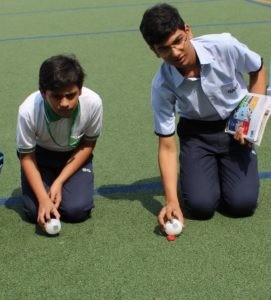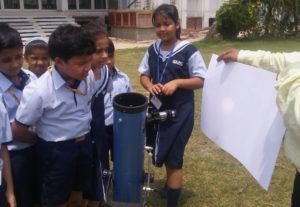
The first total solar eclipse anywhere in the world after the Great American Eclipse of August 21, 2017 comes to Chile and Argentina near sunset on July 2, 2019.
The total solar eclipse will be visible from the southern Pacific Ocean east of New Zealand to the Coquimbo Region in Chile and Argentina , with the maximum of 4 minutes 32 seconds visible from the Pacific Ocean.
What is a Solar Eclipse?
A solar eclipse takes place when the Moon passes between Earth and the Sun, thereby totally or partly blocking the Sun for a viewer on Earth. A total solar eclipse occurs when the Moon’s apparent diameter is larger than the Sun’s, blocking all direct sunlight, turning the day into darkness.

When the Eclipse Happens Worldwide — Timeline
The eclipse starts at one location and ends at another. The times below are actual times (in UTC) when the eclipse occurs.
| Event | UTC Time | Time in Lucknow* |
| First location to see the partial eclipse begin | 2 Jul, 16:55:13 | 2 Jul, 22:25:13 |
| First location to see the full eclipse begin | 2 Jul, 18:01:08 | 2 Jul, 23:31:08 |
| Maximum Eclipse | 2 Jul, 19:22:57 | 3 Jul, 00:52:57 |
| Last location to see the full eclipse end | 2 Jul, 20:44:46 | 3 Jul, 02:14:46 |
| Last location to see the partial eclipse end | 2 Jul, 21:50:34 | 3 Jul, 03:20:34 |
Where will it be visible?
Chile:Totality will be visible in a large portion of Coquimbo Region and small parts of Atacama Region. Cities in the path include La Serena, Coquimbo, La Higuera and Vicuña.
Argentina:Totality will be visible in the provinces of San Juan, La Rioja, San Luis, Córdoba, Santa Fe, and Buenos Aires. Cities in the path include San Juan, and Río Cuarto.
Pitcairn Islands:Totality will be visible from Oeno Island.
French Polynesia:There will be partial visibility in Tahiti and Bora Bora.
Precautions to be taken while observing Solar Eclipse!
Viewing the Sun with our naked eyes for more than a few seconds could damage our eyes. And henceforth, viewing the Sun during Solar Eclipse with naked eyes could even lead to permanent eye damage. We should take necessary precautions to ensure our safety and the safety of others.

You don’t always need a telescope to view the Sun, all you need is an appropriate filter, and a piece of No. 14 arcwelder’s glass is a very popular choice. Welder’s filters of shades 12 through 14 are the safest solar filters.



We can also use a simple projection system and project the image formed at the eyepiece of a telescope on a white sheet and observe it safely or make a pin hole/ ball projector.
Solar view glasses are special eyewear, which can be used for direct viewing of the Sun. Standard sunglasses are not able to filter out eye damaging radiations coming from the Sun. These solar view glasses filter visible, ultraviolet, and infrared light. The eye’s retina does not have pain receptors, and thus damage could occur without one’s awareness.

An Eclipse Never Comes Alone!
A solar eclipse will always take place about two weeks before or after a lunar eclipse. Mostly, there occurs two eclipses in a row and at other times; there are three that can occur during the same eclipse season!

